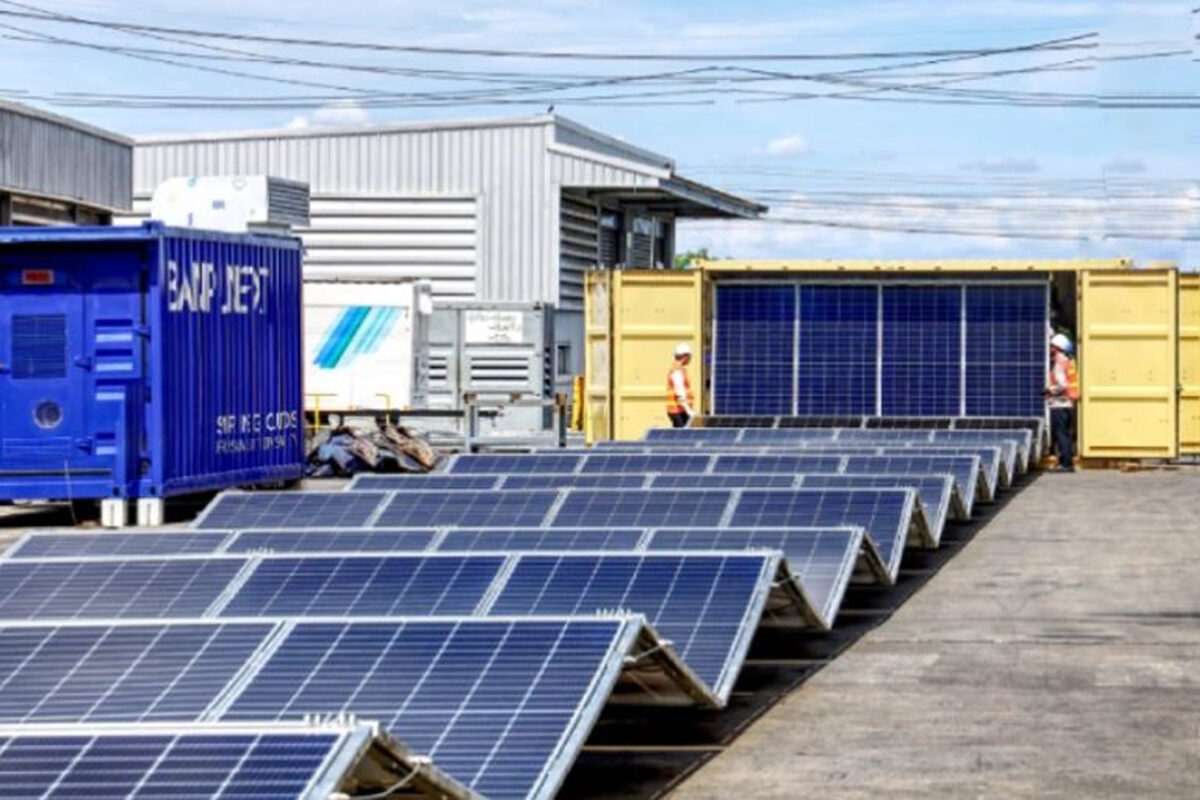From pv magazine Germany
The Fraunhofer Institute for Energy Infrastructures and Geothermal Systems (IEG) is building its new Laboratory Facility for Sector-Coupled Utilization of PEM Electrolysis Products (LA-SeVe) in Zittau, Germany. The city has now granted the building permit, the research institute announced Wednesday.
The test facility is to be built on the site of the Zittau public utilities by early next year for around €2.7 million. This includes an electrolyzer, which will be located in a container room around 12 meters long and 2.5 meters wide and supplied with electricity via a new transformer station. In addition, a heat pump with a maximum output of 105 kW (thermal) will be installed in an existing hall together with buffer storage, pumps and control technology and connected to the electrolyzer via a water circuit. The waste heat from the electrolyzer's research operation will be directed via the heat pump into the city's district heating network.
The test facility is part of the IntegrH2ate project, in which the coupling between PEM electrolysis, heat pump and heating network is being examined. The waste heat from the electrolysis is to be upgraded by the heat pump so that it can be used as district heating in the city's supply network. The oxygen from the electrolysis is also a sought-after commodity if it is sufficiently pure, the researchers explained. The test facility is primarily used to test the operational optimization of the system concept and the efficient coupling of electrolyzers and heat pumps in electricity, heat or hydrogen-driven operation. The operating mode and parameters are changed depending on whether the focus is on using surplus electricity from renewable energy plants, saving fossil fuels or optimal hydrogen production. The researchers at Fraunhofer IEG have already developed concepts for these scenarios and now they can be tested in practice.
“With our test facilities, we are creating a test infrastructure to test and qualify industrial processes,” said Clemens Schneider, project manager at Fraunhofer IEG. “We want to test on a pilot plant scale how heat and oxygen by-products from electrolysis can be optimally processed in dynamic operation.”
The test facility is also intended as a platform to test industrial processes for manufacturers and companies. This includes the methanation of carbon dioxide, closed carbon cycles, tests of compressors for oxygen and hydrogen as well as hydrogen burners and other components to use the main and by-products from PEM electrolysis.
PEM stands for proton exchange membranes or polymer electrolyte membranes. PEM electrolyzers have good partial load capacity and high efficiencies. They are also considered insensitive to load changes. They are therefore well suited for the production of green hydrogen from volatile renewable sources such as photovoltaics and wind power.
This content is protected by copyright and may not be reused. If you want to cooperate with us and would like to reuse some of our content, please contact: editors@pv-magazine.com.




By submitting this form you agree to pv magazine using your data for the purposes of publishing your comment.
Your personal data will only be disclosed or otherwise transmitted to third parties for the purposes of spam filtering or if this is necessary for technical maintenance of the website. Any other transfer to third parties will not take place unless this is justified on the basis of applicable data protection regulations or if pv magazine is legally obliged to do so.
You may revoke this consent at any time with effect for the future, in which case your personal data will be deleted immediately. Otherwise, your data will be deleted if pv magazine has processed your request or the purpose of data storage is fulfilled.
Further information on data privacy can be found in our Data Protection Policy.